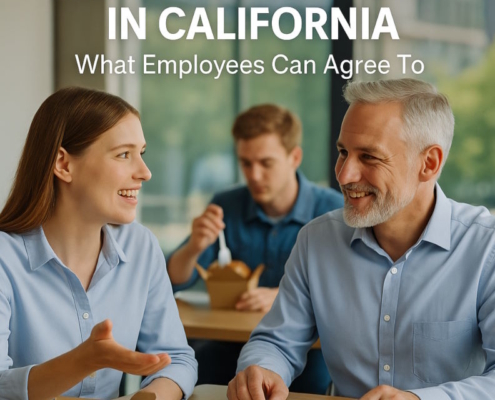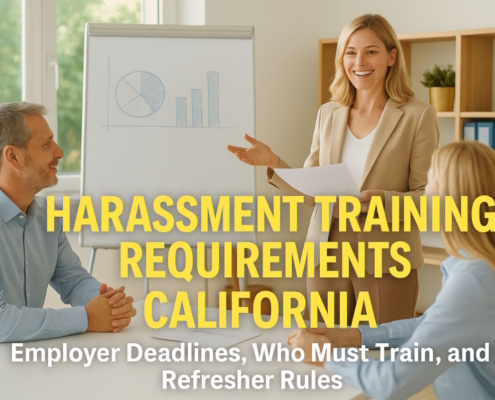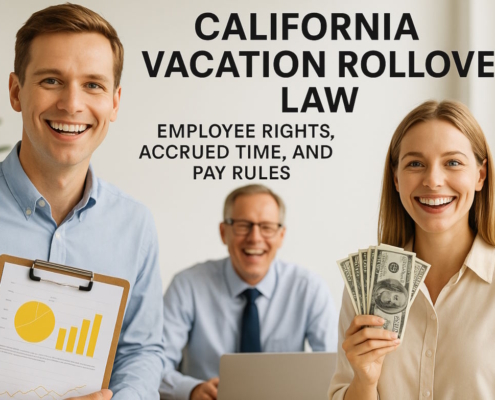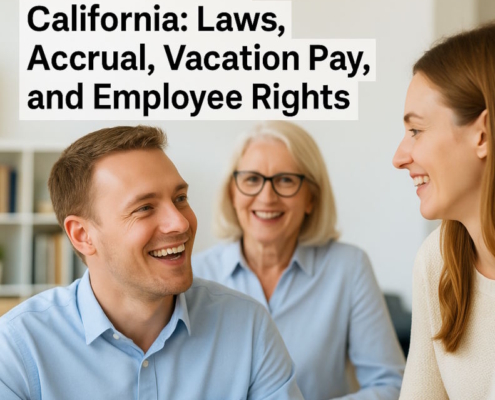California Wrongful Termination Statute of Limitations
The California statute of limitation for wrongful termination is 2 or 3 years, depending on why you were wrongfully terminated from your job. If the wrongful termination is based on contract, the statute of limitation is 4 years.This article discusses the different statute of limitation on common reasons for wrongful termination.
Author: Douglas Wade, Attorney
Email | Call (800) 484-4610
In this article, our employment attorney discusses the statute of limitation for wrongful termination in California as follows:
3 Years Statute Of Limitation For Wrongful Termination Based On Whistleblower Retaliation
The statute of limitation is generally three years for whistleblower protection.
- General whistleblower protection – Labor Code 1102.5 – 3 years to file lawsuit.
- Whistleblower protection for state government employees – Government Code 8547 – – 12 months to file complaint with State Personnel Board.
- Whistleblower protection for occupational health and safety complaints – Labor Code 6310 – 6 months to file complaint with California Labor Commissioner, or 3 years to file a lawsuit.
- Whistleblower protection for reporting labor law violations – Labor Code 98.6 – 6 months to file a complaint with California Labor Commissioner, or 3 years to file a lawsuit
Rights that whistleblowers have against their employers include:
- The ability in some cases to sue the employer for punitive damages, which are designed to punish an employer for egregious behavior.
- The right to sue for compensation for physical pain, mental or emotional suffering, and the loss of career opportunities.
- The right to sue for lost wages and employee benefits.
3 Years for Violation of the WARN Act
The statute of limitation is 3 years for wrongful termination for violation of the WARN Act. Code of Civil Procedure 338(a) CCP.
A company with a covered establishment that has 75 employees or more is required to file a WARN notice if the company lays off 50 or more employees during any 30-day period. The Worker Adjustment and Retraining Notification (WARN) Act helps ensure advance notice in cases of qualified plant closings and mass layoffs. The 60-day notice requirement also applies when the business is terminating operations or relocating its operations 100 miles or more away. Cal-WARN, which is the state version of the federal WARN Act, is triggered by 50 or more layoffs of covered employees within a rolling 30-day window.
Mass Layoff is defined as a reduction in force that is not the result of a plant closing and that results in an employment loss at a “single site of employment” during any 30-day period for (1) at least 33% of the employees (excluding part-time employees), and (2) 50 or more workers (excluding part-time employees).
3 Years Statute of Limitation for Wrongful Termination Under FEHA Retaliation
The statute of limitation for wrongful termination is 3 years for violation of FEHA. The California Fair Employment and Housing Act (FEHA) protects employees from discrimination, retaliation and harassment in employment as follows:
- race
- ethnicity
- religion
- gender
- sexual orientation
- national origin
- color
- sex
- marital statute
- ancestry
- mental disability
- physical disability
The Fair Employment and Housing Act (FEHA) applies to public and private employers, labor organizations and employment agencies.
2 Years Statute of Limitation for Wrongful Termination Based On Violation of Public Policy
The statute of limitation is 2 years for wrongful termination based on a violation of public policy. Code of Civil Procedure 339 CCP. Typically, a California Public Policy Violations case involves an employee is terminated in violation of a public policy created by a statute or regulation. An action for wrongful termination violating public policy gives a terminated employee the right to sue the former employer for wrongful termination.
2 Years Statute of Limitation for Breach of Implied Contract
The statute of limitation is 2 years for wrongful termination based on breach of implied contract. In California, a worker has two years statute of limitation to file a breach of implied contract lawsuit. Section 339(1) of the California Code of Civil Procedure states that the statute of limitations for breach of an oral contract is two years.
A breach of an implied-in-fact contract occur when an employer made a promise to a worker, either verbally or as the result of particular conduct or circumstances, of guarantee work for a period of time by failed to honor that promise. A breach of implied terms of contract occurs when agreement terms that are not expressly stated are not fulfilled.
Do Exceptions Exist to California’s Statute of Limitations for Wrongful Terminations?
Sometimes, employees cannot sue their employer within the proper time frame and worry they have lost their ability to file a wrongful termination lawsuit.
The rules are strict for some wrongful termination claims, and if workers do not file a lawsuit on time, they lose their chance. However, many types of claims exist, including exceptions and allowing workers to file lawsuits for wrongful termination even if they missed the correct window.
Some exceptions to the statute of limitations for employment claims include the following:
- Some statutes of limitations can extend beyond their normal deadlines if the employer continues to engage in misconduct and commits more offenses involving other employees.
- Sometimes, employers do not notice the timing of the claim, and therefore it does not matter. Employers must point out and complain about the claim’s timing for the claim to be disregarded due to lateness.
- Tolling agreements are created for a specific scenario: when both the employee and the employer agree to extend the time frame of the claim. Both parties do this so they have more time to negotiate a settlement that is favorable for both parties, and they avoid the pressure to file a lawsuit too quickly because of the statute of limitations.
- There exist several situations where the law states that the statute of limitations in California stops running and is put on hold because of certain acts that the employer or employee committed.
Ultimately, statutes of limitations govern all the unique types of employment law claims in California. Therefore, workers who are victims of wrongful termination and wish to take action should contact an experienced attorney to determine their next steps.
While taking action as soon as possible provides the employee the best chance to win their lawsuit, employees who wish to sue outside California’s statute of limitations should not give up. Instead, they should contact a skilled lawyer and ask them if their case falls under one of the special exceptions to the rule.
Have a quick question? We answered nearly 2000 FAQs.
See all blogs: Business | Corporate | Employment
Most recent blogs:































